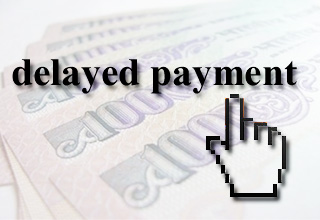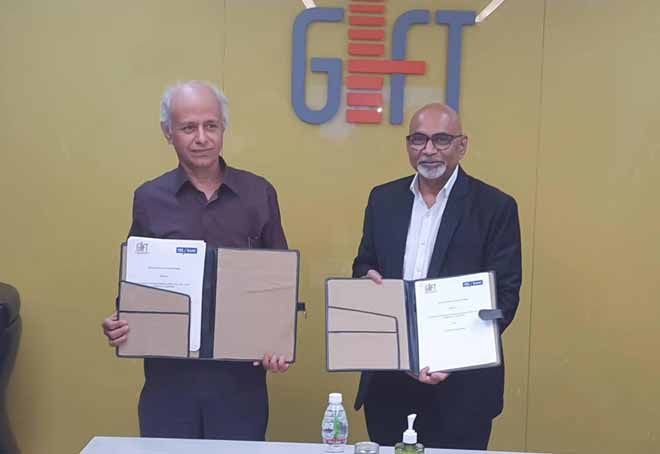Payment and credit flow crises in Trade Credit System: Impact on Industrial Growth, Bank Credit and NPAs
Updated: Nov 16, 2015 05:15:22pm

Transmission effects of unanticipated and wide-spread credit repayment delays/defaults are of systemic nature as firms are interconnected through TC network. Market liquidity is fast drying up. It seems clustering of delays/defaults in TC network is fast approaching critical threshold that could result in a systemic illiquidity cascade throughout the TC architecture.
This is being transmitted to other interconnected financial sector players like banks. As an anecdote, the global financial crisis of 2008 was triggered by defaults on subprime mortgages. During Lehman Brothers failure, payment markets were the first to come under stress. Debt defaults – actual or feared – always drive big financial crisis.
These days, one often hears from businesses about payment-crisis-induced severe market liquidity crisis. Daily TC payments relating to millions of B2B credit-based transactions constitute a very critical component of our country’s payment system. It involves large number and volume of inter-firm transfer of funds. During market distress conditions, payment system amplifies and transmits financial distress crisis to interconnected different segments of a financial system.
Trade Flow and Payment Cycles
A crucial element of payment system is the inter-firm funds flow related to TC. When businesses lose faith in their counterparties’ abilities/willingness to pay as promised,
TC-based payment system becomes vulnerable. This impacts the credit creation and redistribution capacity of TC system. Speed and volume of TC dispensation of a firm is determined by cash flows from its receivables.
Direct correlation between TC flow cycle and its reverse TC payment cycle are akin to a two-coupled-gears set. The-cash-flow-gear shows TC payment cycle starting from retailers and ending with raw material suppliers, whereas the TC-flow-gear depicts credit flow cycle starting from raw material suppliers and ending with retailers. Cash-flow-gear is the driving gear. Its speed and force propel the trade-credit-gear. The cash-flow-gear’s driving power is impacted by widespread delays and rising defaults in TC, firms’ reluctance to release cash as they attempt to conserve liquidity and raise precautionary cash balances to safeguard their business against uncertain future cash flows and tighter credit conditions. These affect momentum of TC-flow-gear. Output suffers as it is strongly correlated with credit flows.
Systemic Crisis in TC
Growing perception and fear of payment delays/default, dishonesty in keeping commitment or opportunistic behavior are pushing counterparty risk to a tipping point. Firms hold on to liquidity rather than extend credit as they move into a “play-safe-mode”. Customers are delaying payments to vendors and different financial market players’ reluctance to release credit are impacting liquidity flows.
Result: Systemic TC crisis. It has wider economic ramifications as in terms of credit volume, financial intermediation and economic activities, TC system is far bigger and much more inclusive than the banking network. It forms the prime-base of working capital of firms of all sizes. TC network’s supply chain financing operations runs along the input-output chain. Velocity of credit circulation is declining, thus affecting the input-output chain.
Intensification of the TC Systemic Crisis and Its Effects
The TC systemic crisis is reinforced and exacerbated by knockout effect on trust and confidence channels - the basic foundation of TC- due to :
- Unexpected delays/default in credit repayment
- Credit milieu moving towards a culture of growing indifferent attitude to TC repayment and fast vanishing of social stigma attached to defaults/bankruptcy
- Break down/weakening of market discipline, business conventions and payment practices inducing strategic bankruptcies, opportunistic and even rogue behavior in B2B dealings
- Nagging fear of contractual non-performance by counterparty
- Decline in perceived creditworthiness in general.
More than the direct impact, the invisible cost of growing trust gap in TC is very high in terms of trade deal not effected or done at sub-optimal level, goods not produced, firms not started as businesses anticipate in advance that they cannot fully rely on counter party commitments. Trust-gap induced disorderly developments in TC impact the pattern and volume of credit flows, capital structure of firms, risk perceptions, relative credit pricing and capex across sectors/firms. Adverse developments in financial system have created perverse incentives and opportunities. This is encouraging consumption credit vs. production credit, trading/imports vs. production, sideline investments vs. capex. Credit composition/flow in favour of large corporates and crowding out of MSMEs from credit market impact output, employment and capex. Cumulatively these impact efficiency, volume of financial intermediation and credit multiplier. Fragility in TC network’s financial intermediation role severely affects the saving-investment-growth nexus.
TC Crisis : Bank Credit Demand and NPAs
TC crisis is transmitted to bank credit channel through an interconnected payment system and firms’ crucial role in intermediation of bank credit through TC chain. Bank working capital ultimately transforms into TC. So, if TC declines, demand for bank credit also falls. Further, cash flow crisis affects firms’ ability to meet banks’ dues. Banks’ NPA headwinds will continue if TC related cash flow difficulties continue. History shows that major macroeconomic crises are associated with financial sector disruptions. These crises are more painful and protracted. Persistent sluggish industrial growth over the last 5 years and strenuous NPA position are the clear signs of financial crisis facing the economy.
Unawareness about TC Crisis
Given the informal and private nature of TC system’s working, lack of structured data and very limited analytics/insight into TC, policy makers/academia are little aware of the gravity of TC crisis. Rot has set in the TC network so deeply that various growth-oriented policy actions, influx of FDI and strong economic fundamentals have very little effect on boosting growth so far. These can work in enhancing growth only when the financial system is working efficiently. Let us not be carried away by India Growth Story and bogey of policy reforms. Most market-oriented reforms and FDI inflows have some positive impact - not as tall as claims made out by academic and policy circles - provided credit institutions work efficiently and effectively. It is the dysfunctional TC which is generating/amplifying various economic vulnerabilities. Without addressing the TC system problem, growth conditions, banks’ performance and NPAs will likely to deteriorate further.
The Way Forward
Greater understanding of TC network, its working, manifestation of its behavior under financial crisis and uncertainty, working of trust and confidence channels and linkages with financial and real sectors are called for to diagnose the growth impacting factors. There is need for identification of breaks in the cash flows and TC flows and devising trade finance interventions to prevent disruptions in supply chain financing.
These will help in preventing liquidation of viable and efficient firms due to liquidity crisis. Other measures may include: accelerated payments of dues by Govt. Departments/large corporates, mandated reporting of late payments, easy and effective access to dispute-settlement mechanism, creation of information exchange to share credit information among trade creditors, creation of environmental and transactional trust in TC eco-system, addressing of both liquidity and counterparty credit and payment delays/default risks. These measures can facilitate free flow of credit - a necessary condition to ensure and accelerate growth. (KNN/ C)












